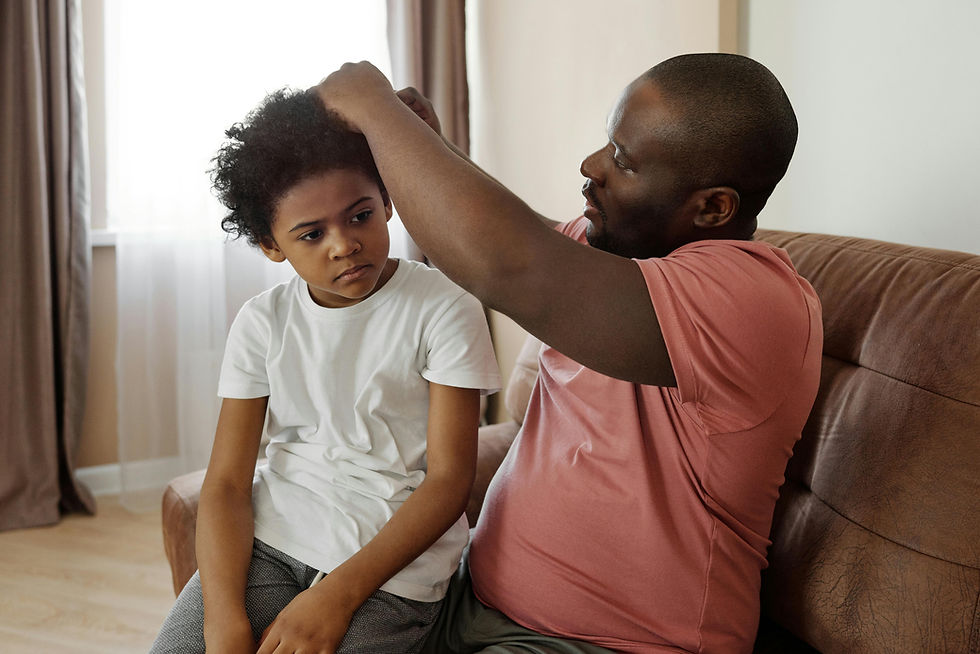Physical Activity for Children and Adolescents
- childrens wellness center

- Feb 8, 2024
- 3 min read
Exercise is a vital part of health and well-being for everyone, including children and adolescents. However, only 1 in 4 children get the recommended hour of physical activity per day. Making fitness a priority for your family will help your child lead healthy and active lives into their adulthood.
The benefits of physical activity for kids are numerous. Exercising helps build and maintain healthy bones, muscles, and joints, as well as improve mental and behavioral health. It can lower the risk of diabetes, high blood pressure, and heart disease later in life, and help your child maintain a healthy weight. Physical activity has also been proven to be beneficial for better sleep quality. Additionally, exercising can boost academic performance, concentration, and self-esteem. Playing sports in particular is a great way for kids to form bonds with their peers and learn teamwork and new skills.
The amount of exercise your child needs depends on their age. Babies should get at least half an hour of tummy time and play each day. Young children ages 3 to 5 should get 3 hours of physical activity per day. And children older than 6 should get 60 minutes of moderate to vigorous physical activity during most days of the week. It is also recommended that kids get 30 minutes of aerobic activity specifically at least 3 times during the week.
As a parent, you can encourage your child to stay physically active. You'll want to help your child select physical activities that are enjoyable and suited to their interests, while also making sure that they're developmentally appropriate. If your child loves games, talk to them about sports they would like to play whether that's soccer, football, or baseball. If they're artistic, maybe they would like to take dance lessons. There are also various fun activities like jump-roping, hula-hooping, playing hopscotch or tag, riding a bike, or going swimming. By making the activity fun, your child will be more motivated to being active.
It's also important to keep your child's safety in mind. That includes wearing the right clothes or gear for certain sports and activities. For example, they should wear a helmet and knee pads when riding a bike and comfortable clothes and shoes when playing sports. Never allow your child to overdo the exercise or push themselves too far. Strength takes time to build and should be done gradually. Children under age 8 should not be lifting weights yet. For older children starting, supervise them at first to make sure they're lifting weights safely so they don't injure themselves. The type of physical activity your child participates in should always align with their age group. For recommendations and ideas for physical activities for kids, check out this resource.
When creating a fitness plan for your kids, the FITT method can be used as a guideline. The FITT method includes:
Frequency: the amount of sessions for exercise (there should be some type of physical activity each day).
Intensity: it's recommended that the selected activities are moderate to vigorous and occur on most days of the week.
Time: the duration of the activity (see above for recommended amount of times based on the child's age group).
Type: sports, recreation, riding a bike, swimming, dance, etc. (choose something your child enjoys).
One of the reasons that kids are exercising less is because of time spent on screen devices such as tablets, smartphones, laptops, and TV. Set limits for how much time they can spend on these devices and remind them to prioritize exercise. The American Academy of Pediatrics recommends no more than one hour of screen time per day for children ages 2 to 5. Being a role model yourself will make it more likely for your kids to exercise as well.
Some kids and teens with disabilities face challenges with physical activity and fitness. For help on finding activities that they can do and how to overcome their challenges, contact our office. Our pediatricians can guide your family and provide recommendations.







Comments